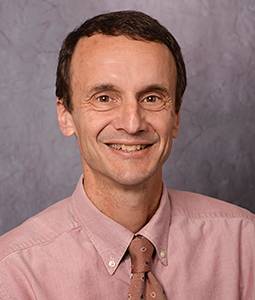Department of Statistics
Our Faculty and Staff
John Grego
| Title: | Distinguished Professor Emeritus |
| Department: | Department of Statistics McCausland College of Arts and Sciences |
| Email: | grego@stat.sc.edu |
| Phone: | 803-777-5070 |
| Office: | Coliseum 4027B |
| Resources: | My Website Curriculum Vitae [docx] Department of Statistics |

Research
A review of my research often shows initial work with collaborators branching off in unexpected directions. Early in my career, I worked on finite mixture models for attitudinal surveys and aptitude tests. Working with collaborators including current and former students, I have more recently developed and studied properties of mixture methods for an environmental application with interesting policy applications-determining the magnitude of a 100-year flood for a watershed when floods can be caused by different meteorological events. With these same collaborators, I have extended study of hydrological applications by studying Bayesian calibration for deterministic flood hydraulics models.
My long-time position as Stat Lab director led to collaboration with the Jones Ecological Research Center in southwest Georgia. In addition to questions on traditional design and sampling issues, we have undertaken a study of spatiotemporal modelling of wildland fires. We are currently modelling fire behavior in small plots; my collaborators would like to extrapolate these models to a landscape scale. Inspired by another environmental consulting client, Professor David Hitchcock and I developed marginal likelihood capture-recapture models that we have applied to loggerhead turtle nesting data.
In developing an industrial design of experiments short course with Profs. Jim Lynch and Don Edwards, I became interested in simultaneous modeling of process mean and variance. I continue collaborative work with Professor Lynch on modelling of breaking strengths for composite fibers and recently started a collaboration with Prof. Lynch and Prof. Paramita Chakraborty on analysis of microarray data. My participation on the latter project brings me full circle to some of my initial interests in mixture models.